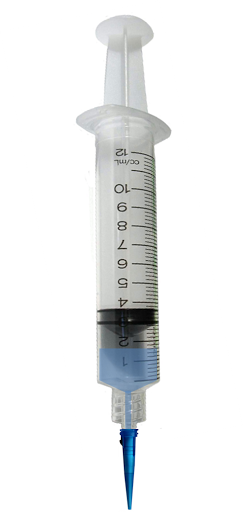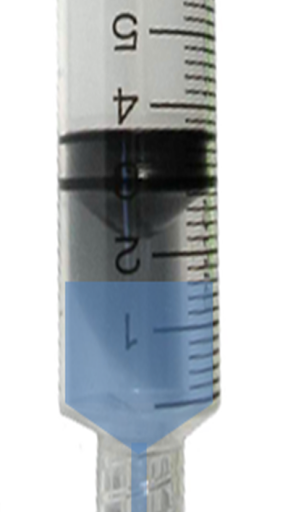Navigation
Install the app
How to install the app on iOS
Follow along with the video below to see how to install our site as a web app on your home screen.
Note: This feature may not be available in some browsers.
More options
You are using an out of date browser. It may not display this or other websites correctly.
You should upgrade or use an alternative browser.
You should upgrade or use an alternative browser.
Reef Chemistry Question of the Day #161 Using a Syringe
- Thread starter Randy Holmes-Farley
- Start date
- Tagged users None
kschweer
Moderator
View BadgesStaff member
Super Moderator
Partner Member 2024
Excellence Award
NJRC Member
Hospitality Award
My Tank Thread
My Aquarium Showcase
B 2.9
Randy Holmes-Farley
Reef Chemist
View Badges
Staff member
Super Moderator
Excellence Award
Expert Contributor
Article Contributor
R2R Research
My Tank Thread
- Joined
- Sep 5, 2014
- Messages
- 67,516
- Reaction score
- 63,946
Going to whole numbers was really a joke to make a point.
You would only have to round to that if error was +/-1.
But to have fun nitpicking:
The lines on the syringe are 0.2, so estimating half way seems questionable.
Add the general inaccuracy of syringes, plus the imperfect picture,
and I would say YES, 0.1 is not an accurate precision.
"accurate precision"
I understand there's potential for inaccuracy. But the answer is, IMO, still able to be read to a tenth of an mL, regardless of the lines. If it had no lines between the whole mL, I could still estimate it to tenths.
Then you can ascribe whatever in accuracy limits you want on top of that.
Last edited:
I understand there's potential for inaccuracy. But the answer is, IMO, still able to be read to a tenth of an mL, regardless of the lines. If it had no lines between the whole mL, I could still estimate it to tenths.
Then you can ascribe whatever in accuracy limits you want on top of that.
I guess the thing is this:
I have generally been trained that you don't add numbers beyond shown by the tool you are using.
If it was digital, reporting in 0.2, and the display oscillated between 2.8 and 3.0, you
might be tempted to report 2.9, but IMO that would be wrong.
ESPECIALLY if the margin of error is well above 0.2.
And with most tools, error is usually above the display resolution.
But it is not digital ... Gradients at 0.2 are technically just a reference.
So yes, I have to concede the point.
dbl
It Takes Less Energy to be Nice
View Badges
Excellence Award
Reef Tank 365
Article Contributor
Moderator Emeritus
Reef Squad Emeritus
Hospitality Award
My Tank Thread
B
e.
The air pushes out all the liquid including that in the nozzle. If there was no air present and you pushed the plunger down, that liquid would be trapped in the nozzle. But with the air pushing out all the liquid and an unknown amount in the nozzle you don't know how much liquid squirts out.
ps Is this why we get the air out?
The air pushes out all the liquid including that in the nozzle. If there was no air present and you pushed the plunger down, that liquid would be trapped in the nozzle. But with the air pushing out all the liquid and an unknown amount in the nozzle you don't know how much liquid squirts out.
ps Is this why we get the air out?
D. 1.6 mL
The air that is next to the plunger is the volume that was within the tip of the syringe - by pressing the plunger, the water will be pushed out first and the air will go back to filling the tip - thus reading zero again on the syringe. The air didn't come from your tanks and it didn't get squeezed out of the water, so counting it as part of the 'volume', you are throwing your results off.
It is possible to use the plunger location when titrating as you are simply determining how much titrate you used (the difference between your 'start-point' and your 'end-point'). As long as you are consistent with what you are using as your measuring-point (ie, the plunger), the math still adds up! However, when trying to accurately measure volume, you must only measure the volume of the substance you desire - in this case, the tank water (liquid).
If you put a bigger tip on the syringe, you sill simply get a larger air-bubble - but the water-volume will still read the same. That is why you must read the water when trying to accurately measure the water volume.
The air that is next to the plunger is the volume that was within the tip of the syringe - by pressing the plunger, the water will be pushed out first and the air will go back to filling the tip - thus reading zero again on the syringe. The air didn't come from your tanks and it didn't get squeezed out of the water, so counting it as part of the 'volume', you are throwing your results off.
It is possible to use the plunger location when titrating as you are simply determining how much titrate you used (the difference between your 'start-point' and your 'end-point'). As long as you are consistent with what you are using as your measuring-point (ie, the plunger), the math still adds up! However, when trying to accurately measure volume, you must only measure the volume of the substance you desire - in this case, the tank water (liquid).
If you put a bigger tip on the syringe, you sill simply get a larger air-bubble - but the water-volume will still read the same. That is why you must read the water when trying to accurately measure the water volume.
Going to whole numbers was really a joke to make a point.
..........................
Add the general inaccuracy of syringes, plus the imperfect picture,
and I would say YES, 0.1 is not an accurate precision.
"accurate precision"
At least the syringes we use have an "accuracy" better than 1 %.
Randy Holmes-Farley
Reef Chemist
View Badges
Staff member
Super Moderator
Excellence Award
Expert Contributor
Article Contributor
R2R Research
My Tank Thread
- Joined
- Sep 5, 2014
- Messages
- 67,516
- Reaction score
- 63,946
Can I turn it over and thump the bubble out?
You could, but that wouldn't be the proper way to use a syringe.
Randy Holmes-Farley
Reef Chemist
View Badges
Staff member
Super Moderator
Excellence Award
Expert Contributor
Article Contributor
R2R Research
My Tank Thread
- Joined
- Sep 5, 2014
- Messages
- 67,516
- Reaction score
- 63,946
At least the syringes we use have an "accuracy" better than 1 %.
Great. So I can estimate them to the hundreths place.
1.6Reef Chemistry Question of the Day [HASHTAG]#160[/HASHTAG]
I have just drawn tank water into a syringe with a tip (shown below, including a blowup of the barrel). The blue coloration shows where the fluid is.
When I started to draw fluid in, the tip and syringe were empty and the plunger was all the way in. Now I am going to dispense the fluid into my test vial.
How much fluid will be dispensed by pressing the plunger all the way back in?
A. 3.6 mL
B. 2.9 mL
C. 2.2 mL
D. 1.6 mL
E. Cannot be determined because of the air present
Good luck!


.
- Joined
- Dec 18, 2015
- Messages
- 1
- Reaction score
- 0
1.6
I'm going with E due to the fact that the plunger tip is conical. We, or I, do not know how much that will displace once it contacts the liquid.
I'd flip that puppy upside down and thump/push the bubble up and out!
I'd flip that puppy upside down and thump/push the bubble up and out!
Great. So I can estimate them to the hundreths place.
LOL
It was in the context of what rygh said. It is not accuracy in a strict sense hence the inverted commas I used for that word.
For some tests such as Mg and Ca we use a narrow barrel 2 ml syringe which actually gives a accuracy of better than 1% for the 2 ml water sample. Estimation of 0.02 ml is easy.
The titration syringe is a 1 ml with 0.01 ml gradation marks, the readings match almost perfectly. The tip gives however a drop size a tad higher than that.
So overall the syringes are more accurate than some might think to be.
The tip gives however a drop size a tad higher than that.
I've estimated the drops from the Salifert tips to be appx. 0.02 mL, whereas the drops from my 50 mL Class A burette are more like 0.058 mL. When I'm going for the greatest resolution possible on a titration, I aim for the total amount of titrant to be at least 15 mL, and use the burette up until the last 0.5 mL or so, and then use a Salifert syringe with tip for the last portion of the titration because of the nice, small drop size!
Similar threads
- Replies
- 9
- Views
- 194
- Replies
- 19
- Views
- 356
- Replies
- 29
- Views
- 538
- Replies
- 21
- Views
- 391
- Replies
- 5
- Views
- 207


















